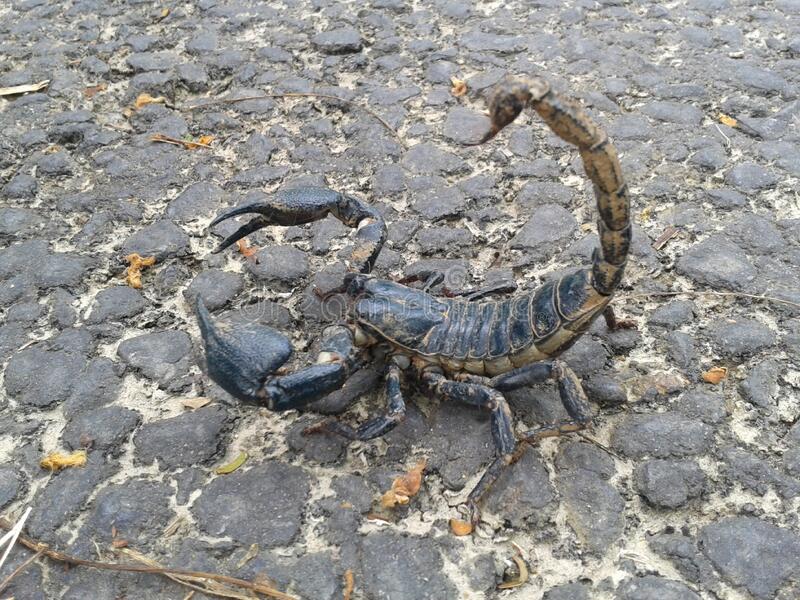ANIMAL: Indian Giant Forest Scorpion Gigantometrus swammerdami Type of Animal: Scorpion Habitat: Rainforest, especially in/around degraded/semi-degraded termite mounds, tree holes, abandoned rat/crab holes, under rocks/logs, abandoned burrows, & tree notches. Also utilize abandoned rat/crab holes in bunds of agricultural fields. Location(s): India & Sri Lanka Appearance: Largest scorpion in the world, adults reddish brown to reddish black scorpion, juveniles reddish w/ yellow stinger, large pincers Food/Diet: Insects, spiders, & other scorpions (including each other) Status in Wild: Stable Conservation: Breeding from zoos & breeders Lifestyle: Solitary Additional Info: Called: Male Female Young: Scorpling Group: Solitary Weight: Male: 1.5-1.7 oz Female: 1.8-2 oz Gestation: 5-8 months Life Span: 5-8 years Body Length: Male: 5-7 in Female: 8-9 in Tail Length: Male: 2.5-3.5 in Female: 4-4.5 in Main predators are predatory birds, mammals, & lizards. Must predigest food before eating, so they secrete digestive enzymes onto prey, liquefying it. Active at night (nocturnal). Like most scorpions, they’re ovoviviparous, w/ eggs hatching inside mom before coming out as live young. Like all scorpions, use sensory hairs to detect ground/air vibrations. Poor eyesight but good hearing & sense of touch. Scorplings stay w/ mom for 1st 3-4 weeks of life. Mom carries young on her back. Scorplings leave mom after 1st molt. Reach maturity at a year old. Scorplings molt several times before maturity. During courtship, male grasps female, holding/pushing her around until he finds suitable mating spot. When he finds spot, he deposits sperm onto substrate & pulls her over his sperm. These scorpions occasionally appear in the pet trade. They typically hide during the day. Fun Fact(s): These scorpions can go a whole year w/o eating. These scorpions can remain survive for up to 2 days underwater. Since they’re large scorpions, adults prefer defending themselves/killing prey w/ nonvenomous pincers rather than venomous stinger. Juveniles rely more on stinger. While painful, sting isn’t deadly unless someone’s allergic. Like all scorpions, they can glow under UV light.
